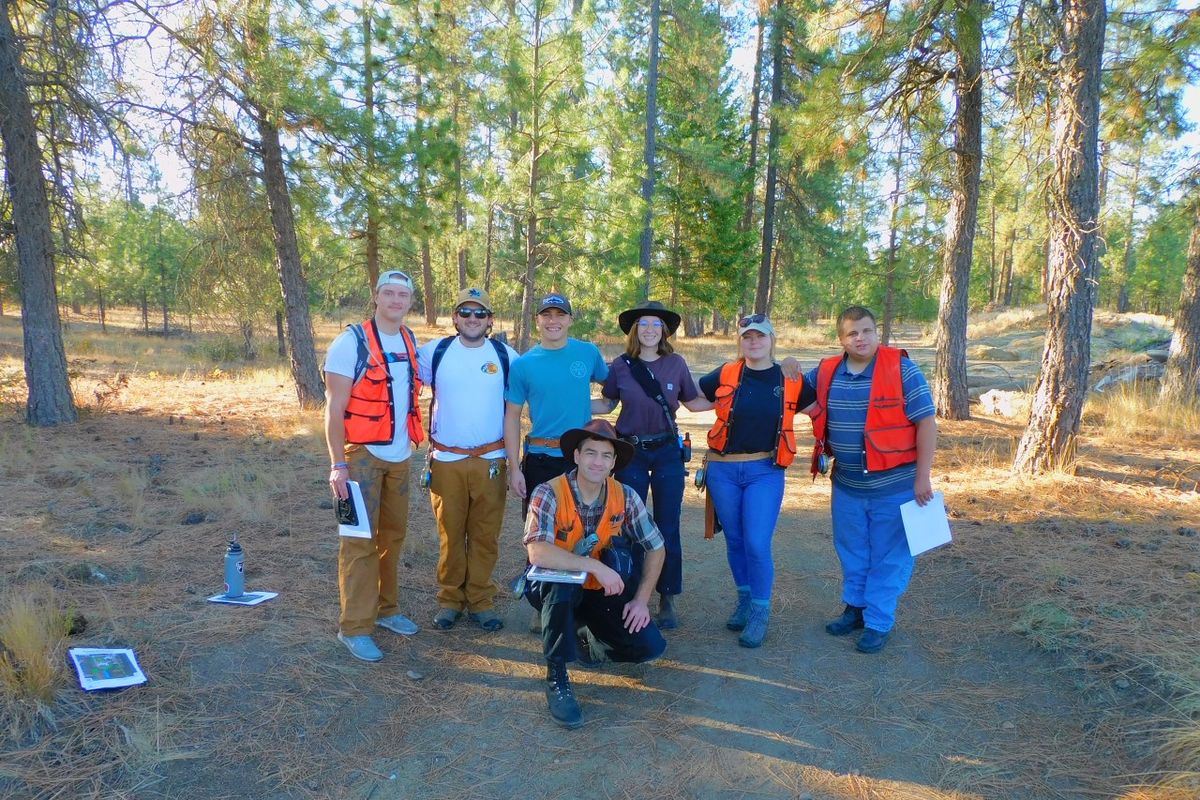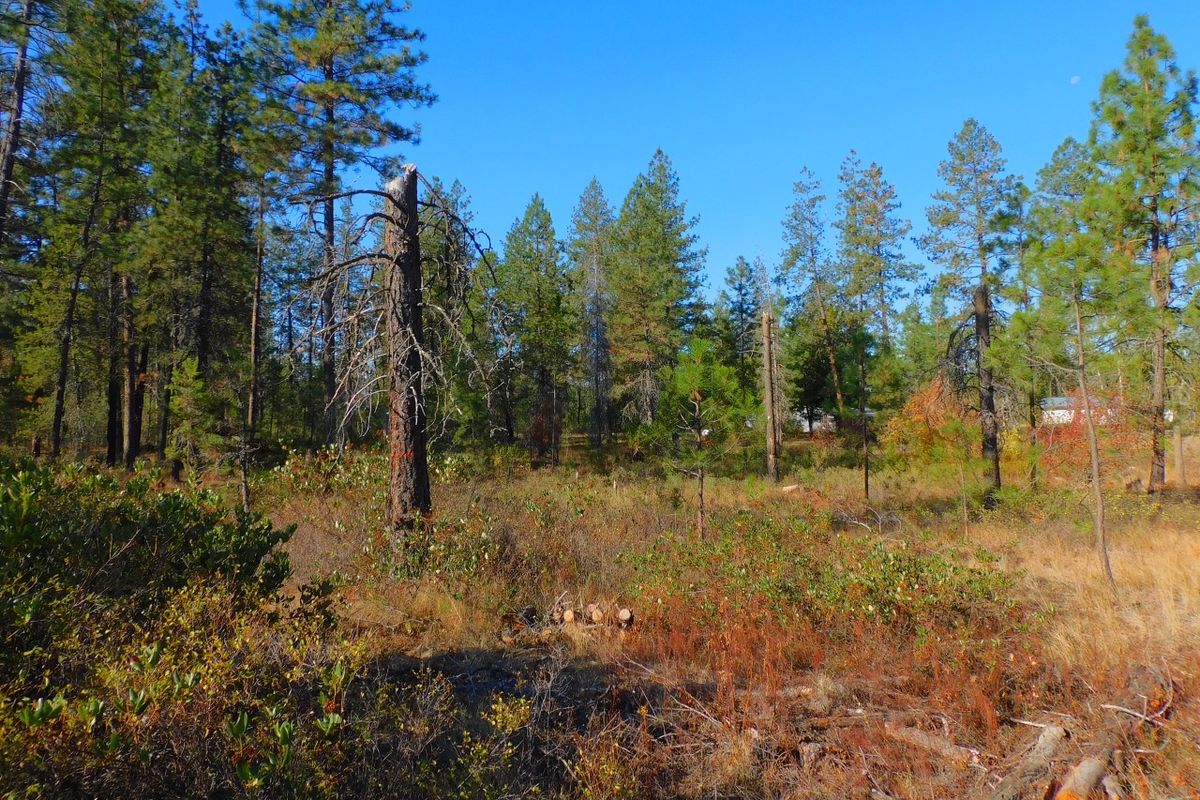Managing a forest: WSU class is developing management plan for Riverside School District’s 97-acre natural area
A part of the Riverside School District forest land shows an opening created by a wildfire that started on adjacent property. The land is being managed for wildlife habitats and educational opportunities, and a Washington State University class is developing a management plan for the district. (Courtesy)
Washington State University and the Riverside School District have teamed up to offer a class in WSU’s School of the Environment that will have students develop a forest management plan for the 97-acre Community Learning Forest on the school district’s land.
The Experiential Learning in Resource Planning class is led by associate professor Mark Swanson, who has taught at the college since 2007. The idea for the class came from Randy Burke, a forester with the Department of Natural Resources, a Riverside parent and a former student of Swanson’s.
“I really appreciate Mark and his students taking Randy up on his offer,” said Riverside Superintendent Ken Russell.
The district has been working to improve the health of the forest for the last two years, following a small fire that ignited on the land. Numerous thick stands of small, young trees and trees downed in windstorms left the area ripe for a destructive fire.
Since then, the district has harvested some larger trees and thinned some areas. “We have had the Washington Conservation Corps come out on at least three occasions and thinned the trees,” Russell said.
The forest, part of the district’s 186-acre school campus on U.S. Highway 2 at Deer Park Milan Road, is home to several different types of wildlife, including deer, birds and turkeys. Moose have also been known to wander through.
The district uses the land extensively as well. The cross-country team runs on the trails that crisscross the land, and K-12 teachers bring their students out for hands-on learning. The small area that burned a couple of years ago has been left alone, allowing students to see for themselves how a forest recovers from fire over time.
Swanson and his students spent a weekend on the property last month. They walked the forest, measured trees and collected other data. The areas of dense, small trees were identified as an issue. It typically happens after mature trees are harvested, he said.
“Sometimes we have to correct that,” Swanson said.
On the other hand, Swanson said it would be good to leave a few pockets of that dense forest intact in order to provide cover for the deer that roam the land. Leaving a few pockets also helps create ecological diversity, he said.
“One good principle of forest management is not to do the same thing everywhere,” he said. “What we’re going to aim for is a diverse mosaic on the property.”
The forest is diverse in age and species of trees and has a wide variety of natural vegetation, Swanson said. There are dead trees, called snags, that provide important habitat to woodpeckers and other birds.
“Things that have died in the forest have a lot of value,” he said.
There’s also evidence of bark beetles on the property. When trees infested by the beetles die, they turn a rusty red color. A few dead trees aren’t anything to worry about, Swanson said, and can even be beneficial by creating new snags and naturally thinning the forest.
“We really want to respect some of these natural processes,” he said. “What we don’t want is outbreak conditions.”
A forest management plan is designed to maximize forest health and enhance recreational or commercial value, Swanson said, though in this case it is educational value that the district wants. Plans can be tailored to fit the needs of each landowner. Forest health can be achieved by harvesting mature timber, thinning, using prescribed fire or other management methods, he said.
“There’s really a strong core of sustainability at the heart of forest management,” he said.
Russell said he enjoyed having Swanson’s students visit.
“When Mark and his students came, they camped on our campus, and they attended our Friday night football game,” he said.
Swanson said the students enjoyed the hands-on work and will likely visit again before wrapping up their work.
“They’re getting out there and getting their hands dirty,” he said.
Swanson said he likes that the forest is being used to provide learning opportunities for students of all ages.
“It’s an incredible asset,” he said. “I think students do better at all levels when they’re surrounded by nature. Think of the experiential learning you can do.”


